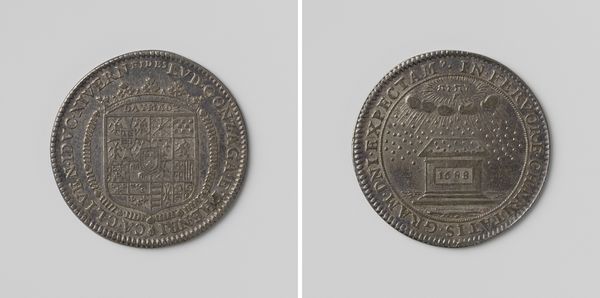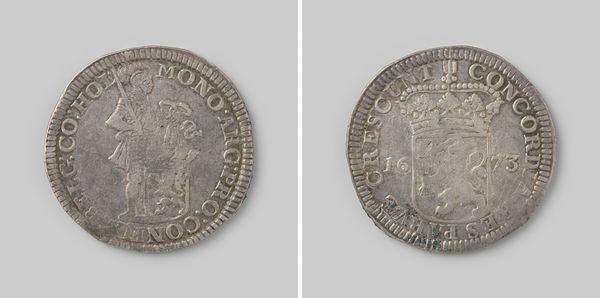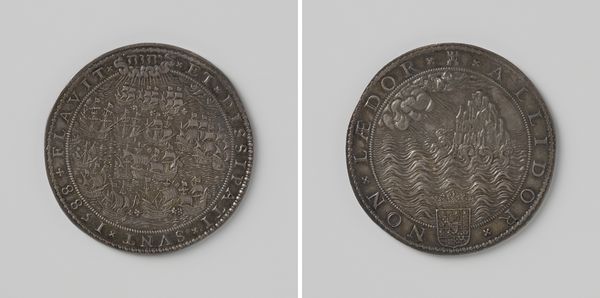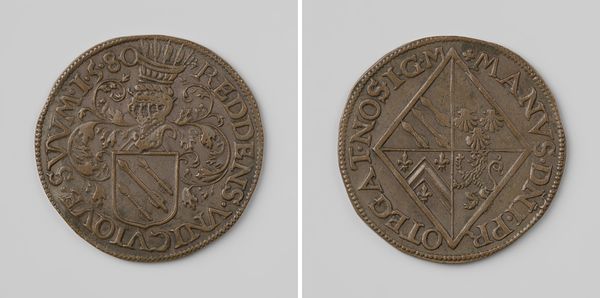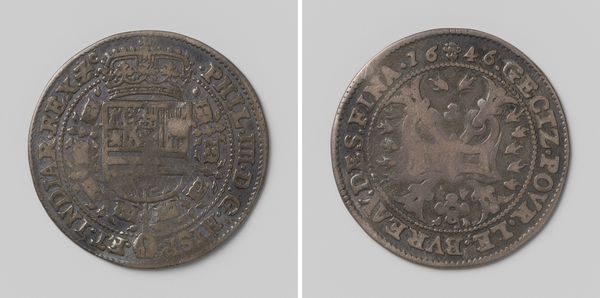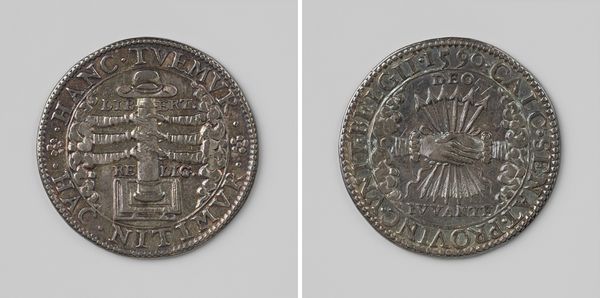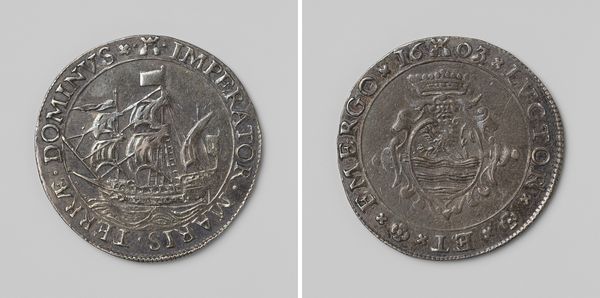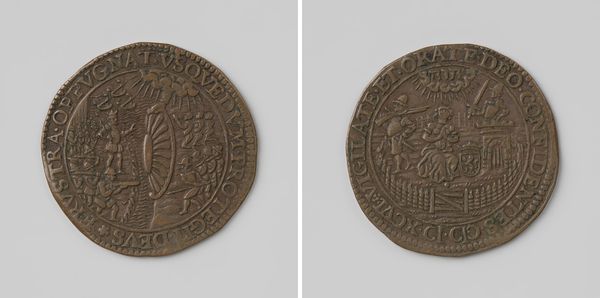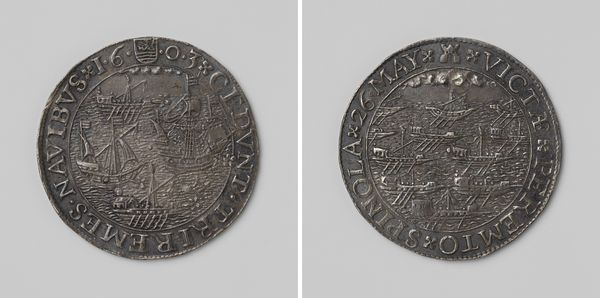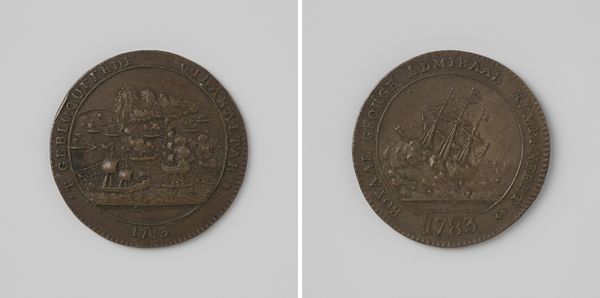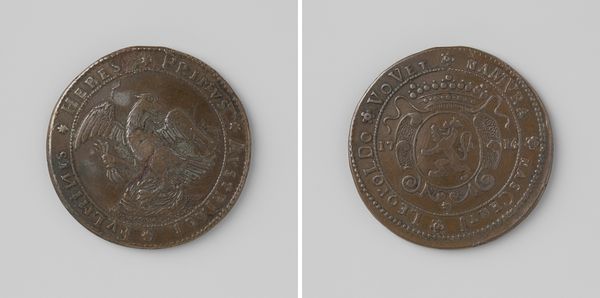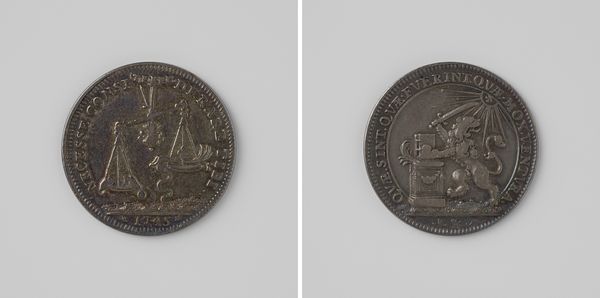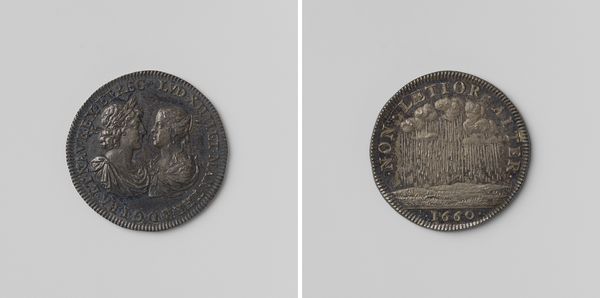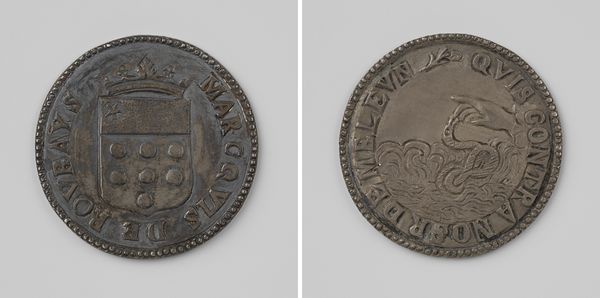
silver, print, metal
#
portrait
#
silver
#
dutch-golden-age
# print
#
metal
#
history-painting
Dimensions: diameter 2.4 cm, weight 3.02 gr
Copyright: Rijks Museum: Open Domain
Editor: Here we have a Dutch silver coin, a "Hollandse scheepjesschelling" from 1670. One side features what looks like a crowned lion, the other a sailing ship. The coin’s surface looks rather worn which somehow makes it quite beautiful to my eye. What draws your attention when you look at it? Curator: Immediately, the bilateral symmetry is of primary interest. Note how both sides present a circular composition defined by the rim, but contrasting visual weight. One side presents heraldic imagery anchored by a strong central motif while the other incorporates a naturalistic scene dynamically integrated with text. Editor: Could you elaborate on the contrast? I see them both as quite striking designs, although I agree the crowned lion is very bold. Curator: Observe how the heraldic lion and crown establish verticality against a textured field; in contrast, the ship employs an elliptical movement suggesting forward motion on water. Furthermore, examine the treatment of line. On the lion side, lines define hard edges creating static forms whereas the ship utilizes a network of fine lines to convey volume, depth and atmosphere. Editor: That’s a fascinating breakdown. So you're saying the ship uses a more sophisticated, shall we say, painterly technique even though it’s a coin? Curator: Precisely! It prompts a meditation on function. Is the artistry subordinated to symbolic intent? Does its tactile presence elevate currency beyond simple exchange? What paradox is established by the artistry versus utilitarian function? Editor: This coin now seems less like simple money and more like a carefully considered statement. It makes me appreciate even mundane objects that might embody deeper artistry. Thank you. Curator: A rigorous analysis of formal structures can always enrich one’s appreciation for commonplace objects.
Comments
No comments
Be the first to comment and join the conversation on the ultimate creative platform.
